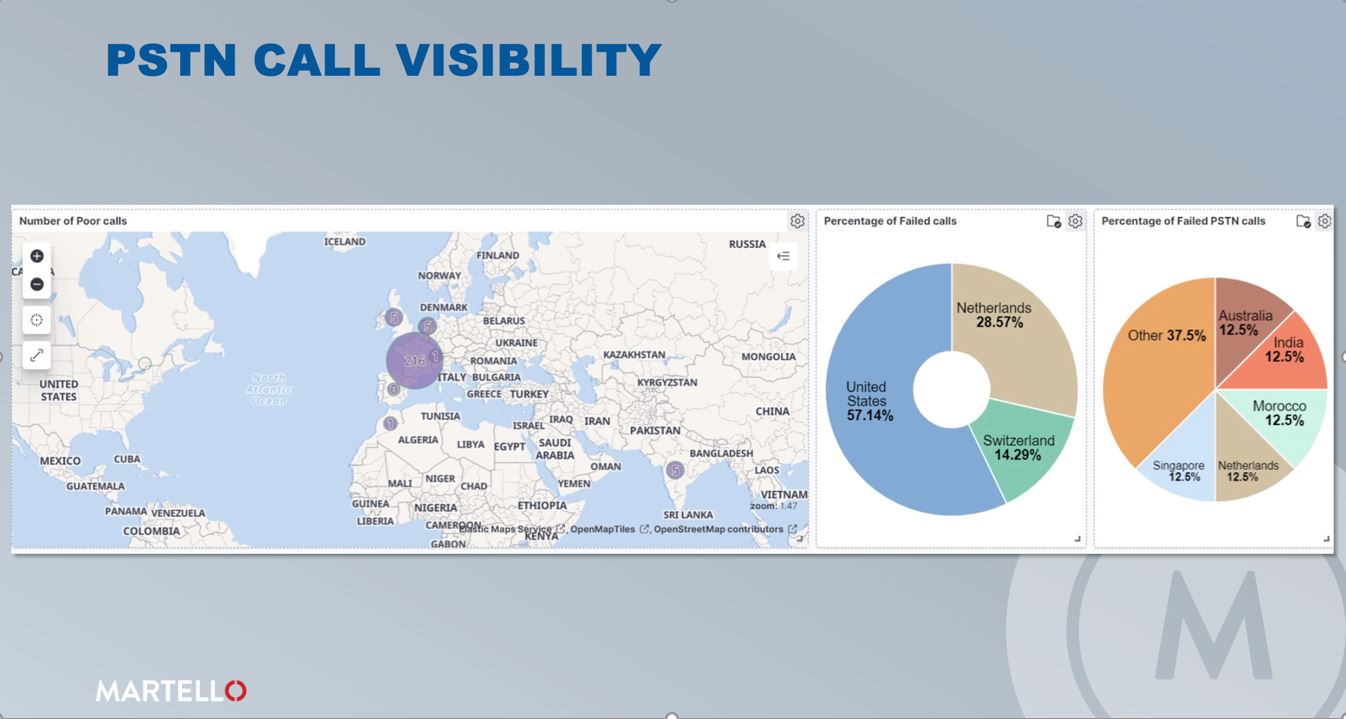Main Points of Failure in the PSTN Supply Chain
Microsoft Teams Monitoring
In this series of articles, we are reviewing in detail the PSTN routing for Microsoft Teams voice. In the previous article, we reviewed the challenges IT teams can face when mixing Microsoft Teams, PBXs and PSTNs. Now, let’s take a deeper look at the complexity and potential points of failure in the PSTN supply chain.
Complexity and Potential Points of Failure in the PSTN Supply Chain
The below graphic sets out the nature of the challenge for IT teams. Voice calls move from Microsoft 365 on the left, which includes Teams as well as Microsoft’s Phone System Direct Routing which connects to your on-premises solutions, including as the Session Border Controller and any third-party PBX telephony equipment you have, before finally getting to the connection with the old PSTN, which is actually making the phone calls.
Source: Microsoft
This gives us three distinct areas where problems can occur with a multitude of permutations within these. For example, while Microsoft 365 and your on-premise solutions might be working flawlessly, there might be a problem with how the user is connected to Microsoft Teams. Alternatively, in a working from home environment, this could be something as simple as their kids playing XBox at the same time and sucking up all of the bandwidth. Perhaps there could be an issue with how the Direct Routing is configured, or there could be a performance issue with your SBC provider… and the list goes on.
In our experience, the number one pain point for users when it comes to managing voice with Microsoft Teams is that they don’t have the right tools to visualize a user’s path to and from the Microsoft data center looks like, despite having a basic understanding of where the problem spots potentially are. IT has no visibility into the performance of the endpoint, local network, Internet connections, internal routing paths that may add latency, and the legacy telephony components. Tracking these things down can be a painful exercise when they’re not within an office network, which is assumed to be fairly well-documented within the confines of a business network. But, when you’ve got hundreds, or thousands, of people in unique home offices, it gets unmanageable very quickly.
Why is PSTN Call Visibility Important?
Having a top-level picture of what’s going on across your organization and where any hotspots are is critical to helping IT understand the scope of a problem and to prioritize their efforts. If there are a hundred people having call problems in, say, the Paris office, with others scattered around the world, IT can help to inform those affected, while starting with Paris to initially positively impact the greatest number of users.
Martello provides comprehensive visibility into Microsoft Teams including PSTN functionality. Using flexible dashboards, IT can flexibly view the current state of Microsoft Teams performance, being able to drill down into specific functionality (e.g., PSTN call quality), to better understand what problems exist (e.g., failed calls or poor performing calls etc.) and who is impacted.
Download our new eBook ‘10 Microsoft Teams Performance Use Cases for IT Admins’ to get up to speed on Teams performance best practices with real world use cases.
Download Now >>
Are you and your team still spending a lot of time troubleshooting Microsoft Teams performance issues?
Martello’s Microsoft Teams Monitoring solution enables proactive support for all Microsoft Teams voice calls, whether they use cloud or PSTN infrastructure.
Book a demo today >>




